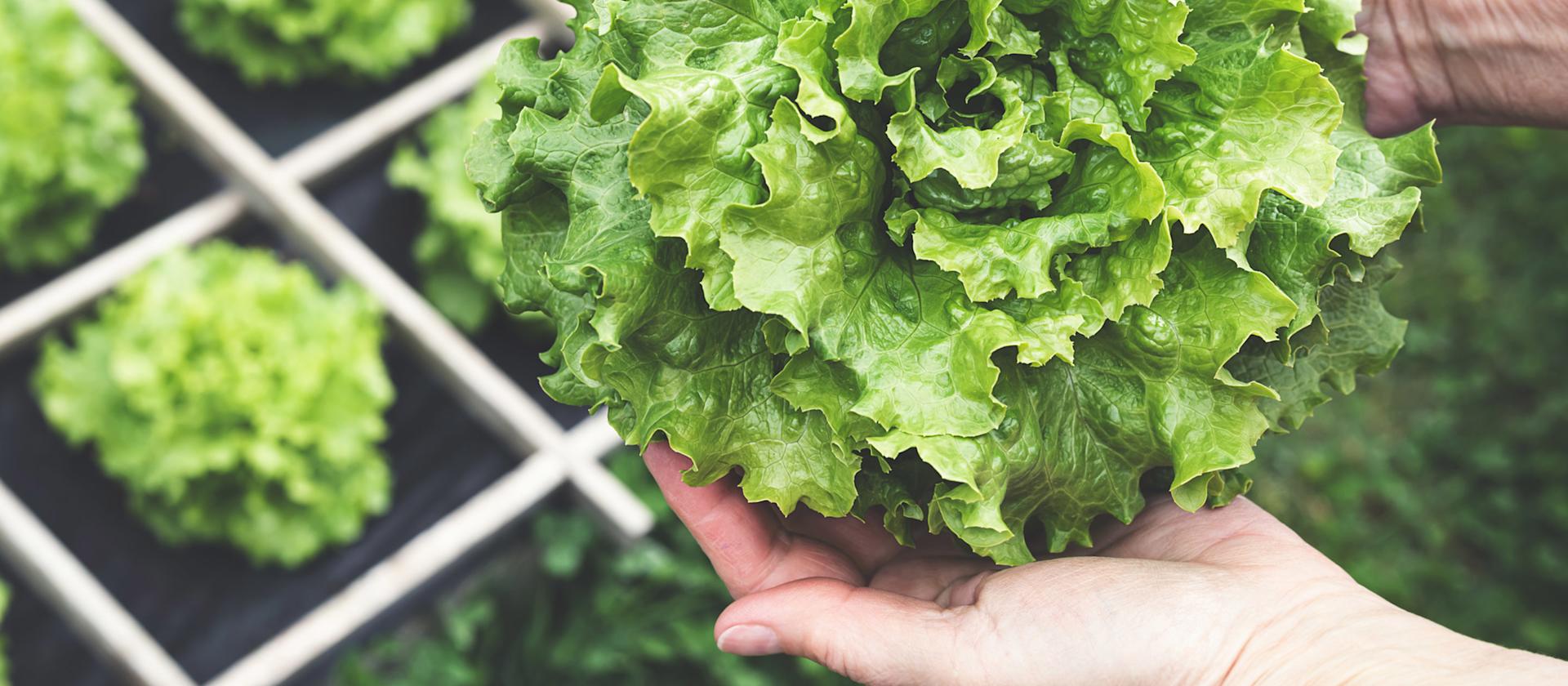
Food waste
What do you know about food waste?
Take part in the food waste quiz and find out how much you already know.
navigation

Food waste
Lettuce consists of 95% water and wilts quickly. Use these tricks to keep it nice and fresh for several days.
If there’s enough space in your vegetable drawer, score the roots of the lettuce crosswise and place it in a small bowl with a little water. Cover the lettuce with perforated film (or the original packaging) and place it into your vegetable drawer. Never store lettuce in a closed box, as it will spoil more quickly if moisture can’t escape.
If the outer leaves are already brown, simply remove them. Wrap the head of lettuce in a damp cloth sprinkled with a few drops of vinegar and lemon juice – the acidity will keep bacteria away. Then place the lettuce into your vegetable drawer. Lettuce that has already been cut can also be wrapped in a (dry!) tea towel or put into a freezer bag lined with kitchen towel.
Lettuce is sensitive to ethylene, which is released by ripening fruit and vegetables; therefore, it shouldn’t be stored near apples, pears, mangoes, bananas, tomatoes or avocados.
The fresher your lettuce is, the higher its vitamin content. In Switzerland, lettuce is in season from March to the end of November. Incidentally, the dark, outer leaves contain more vitamins than the light ones.
Did you know that you can also braise or sauté lettuce? The leaves can also be used to make a variety of other surprising dishes. How about lettuce and edamame soup, green chickpea hummus or lettuce pesto? To make pesto, puree the leaves with peeled almonds and olive oil, then add some pecorino and a little salt – and you're done! When made into pesto, your lettuce will remain edible for up to four weeks.
Photo/stage: Getty Images
With simple tips, you too can reduce food waste. Join now and let’s save food together.